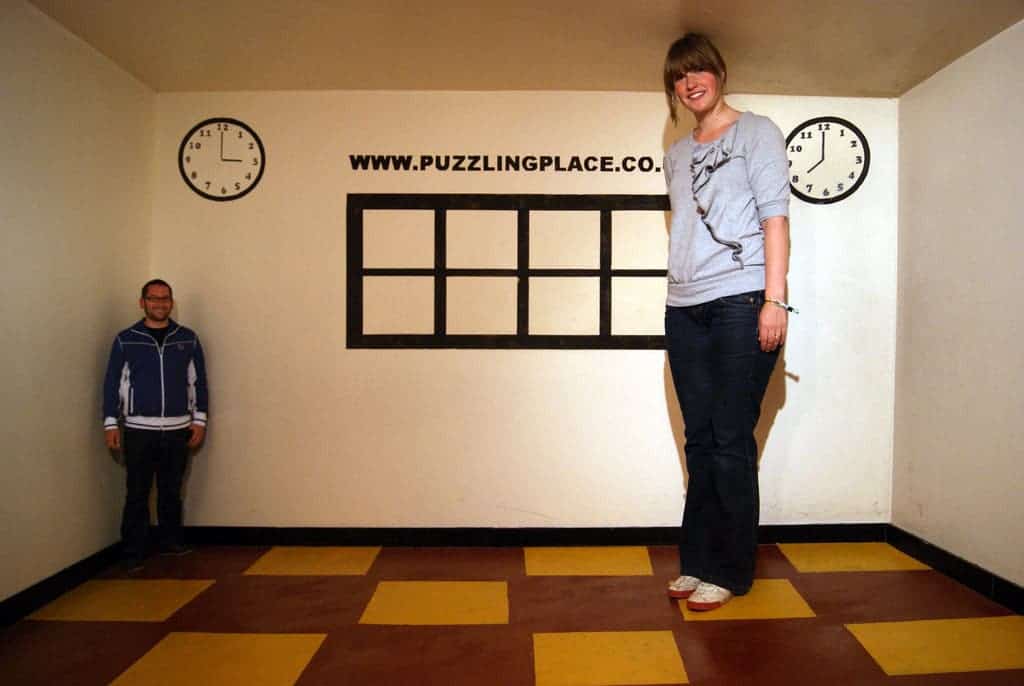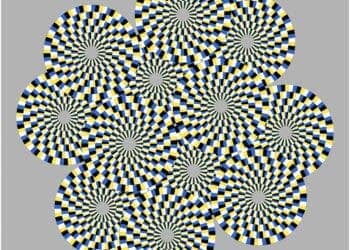
You’re probably mesmerized by the clip above. But you’ll probably be more amazed to learn there is no image manipulation or processing of any type. So what’s going on here? Obviously, the people can’t be changing sizes this fast, so something’s up.
Yes, you’ve guessed right: it’s an optical illusion triggered by the Ames Room, named after its inventor, the American ophthalmologist Adelbert Ames, Jr.
An Ames Room is a distorted space that can make objects appear to change size and shape as they move across the room. Let’s explore the fascinating science behind the Ames Room illusion and how it continues to challenge our understanding of perception.
Entering the Ames Room
The Ames Room illusion is all about perspective. It tricks your brain into thinking that objects in the room are at a different distance than they actually are, and therefore appear to be a different size than they should be.
There are actually two illusions associated with the Ames Room. First of all, the room looks cubical when viewed from a specific vantage point, but in reality, it is constructed with a trapezoidal shape, as you can see in the schematic below. This makes one side of the room appear much longer than the other, even though both sides are the same length.
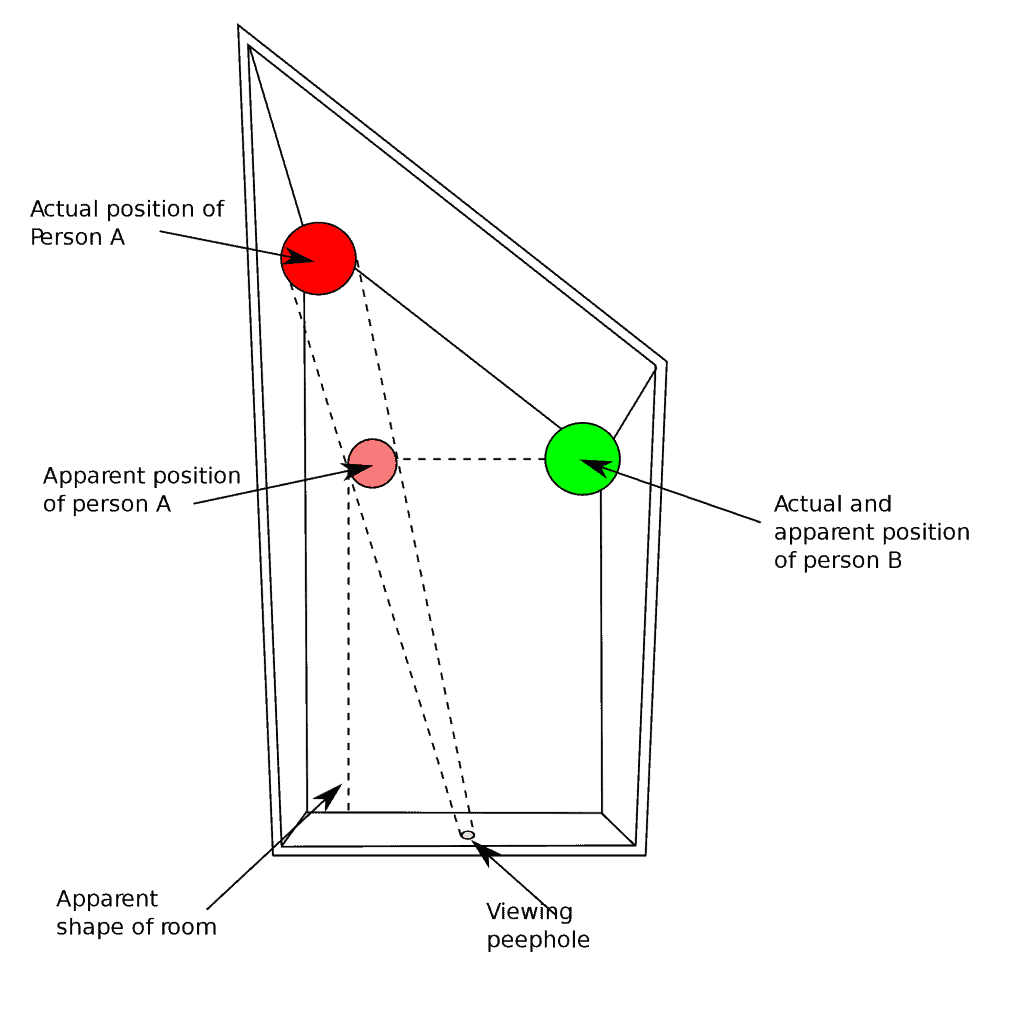
To experience the optical illusion, the room is viewed through a pinch hole such as to avoid any clues from stereopsis, and it is constructed so that from the front it appears to be an ordinary cubic-shaped room; it’s a trick of perception.
When you stand in the corner of the room, you are closer to one wall than the other. Your brain automatically assumes that the wall closest to you is smaller and further away, while the opposite wall is larger and closer. However, this is not the case. Both walls are the same distance away from you, and therefore should appear the same size. The distorted shape of the room, combined with the angle at which you are viewing it, creates an illusion that tricks your brain into seeing something that isn’t there.
The second illusion is that within an Ames Room, people or objects can appear to grow or shrink when moving from one corner to the other. This trick is also related to the specific shape of the room. The ceiling lowers down and the floor tilts upward, but to the viewer, it appears straight, so a person standing in one corner appears to the observer to be a giant, while a person standing in the other corner appears to be a dwarf even though they’re the same height. This effect is known as the size-constancy illusion and is what makes the Ames Room so intriguing.
The illusion is so convincing that a person walking back and forth from the left corner to the right corner appears to grow or shrink.
Ames’ original design also contained a groove that was positioned such that a ball placed inside would appear to roll uphill, against gravity. Richard Gregory, a British psychologist and Emeritus Professor of Neuropsychology at the University of Bristol, regards this apparent “anti-gravity” effect as more amazing than the size changes, although today it is often not shown when an Ames room is exhibited. Still not convinced? Let’s look at it a bit closer.
Although the floor appears to be level, it is actually at an incline (the far left corner is much lower than the near right corner). The walls appear perpendicular to the floor, although they are somewhat slanted. Your eyes and your brain is tricked because you’re used to seeing normal, rectangular rooms. If you’d show this illusion to someone that had never seen a room or a regular construction, he’d be less likely to be fooled.
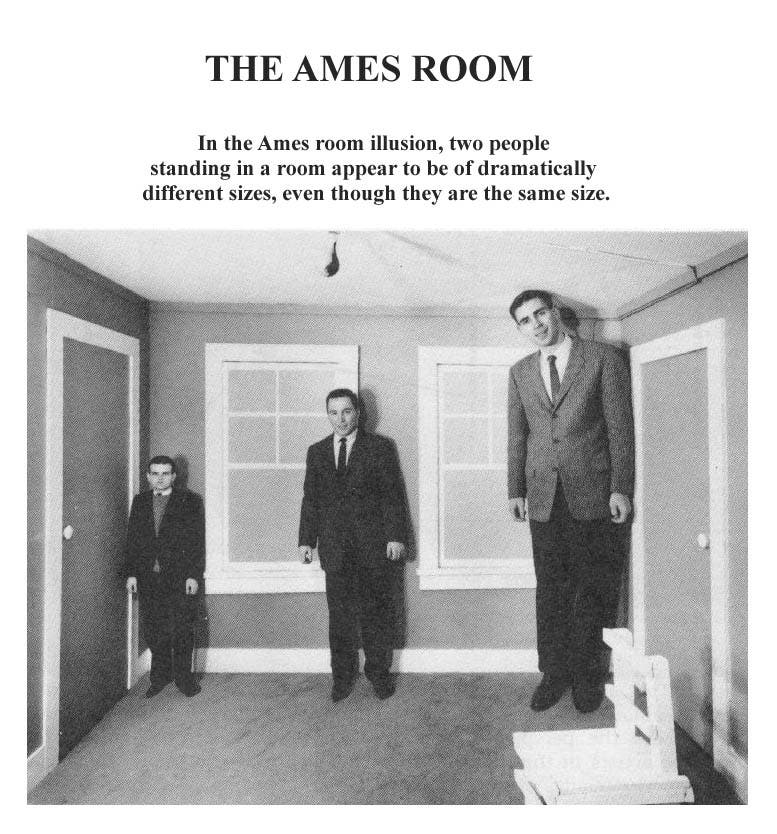
The Science of Perception
The Ames Room illusion is not just a trick for the eyes. It challenges our understanding of how the brain processes visual information. Our brain uses a process called size constancy to help us perceive objects at a constant size, regardless of their distance from us. This is why objects far away appear smaller, but we still perceive them as being the same size. A car driving on a roadway at a distance might appear the size of a pebble, but we can ascertain its true size from the other objects around it that provide contexts, such as equally shrunken buildings and road signs.
The Ames Room illusion works by manipulating the cues that our brain uses to determine an object’s distance and size. The room’s unusual shape and slanted angles create a distorted image that our brain struggles to interpret. It has to reconcile what it’s seeing with its understanding of how the world should look. This mismatch results in the brain perceiving objects in the room as being a different size than they actually are.
The Ames Room’s Legacy
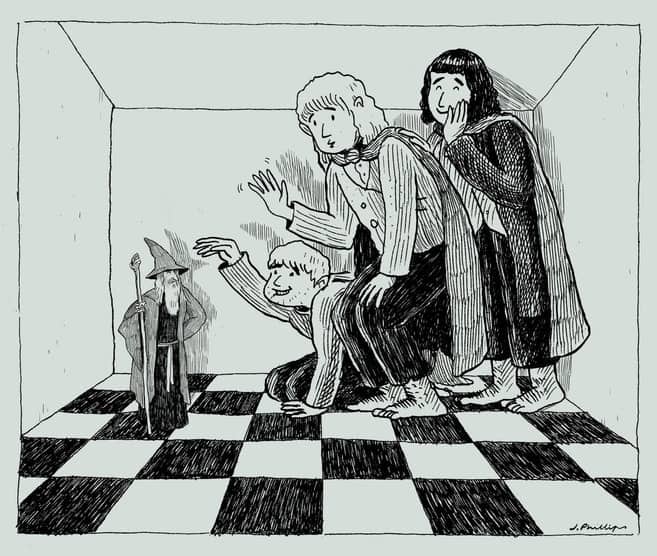
The Ames Room was first constructed in 1934 by psychologist Adelbert Ames Jr. Most notably, Ames Rooms were used in the Lord of the Rings, to manipulate the size of the hobbits relative to Gandalf. An Ames room is also depicted in the 1971 film adaptation of the Roald Dahl novel Charlie and the Chocolate Factory.
The Ames Room illusion continues to fascinate scientists and artists alike. It’s a reminder that our perception of reality is not always accurate and can be influenced by our surroundings. It’s also a reminder that there is still so much we don’t know about the brain and how it works.
